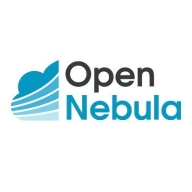

OpenNebula and Nutanix Cloud Manager (NCM) compete in cloud management solutions. NCM has an upper hand due to its advanced features and performance, which justify its higher cost for enterprise-focused capabilities.
Features: OpenNebula offers simplicity, flexibility, and native support for multiple hypervisors, making it ideal for smaller deployments. NCM provides an integrated infrastructure, hybrid cloud support, and deep analytics, excelling in complex, scalable environments.
Room for Improvement: OpenNebula could improve by offering more streamlined deployment processes and expanded support services. Additionally, a more user-friendly interface could enhance its appeal. NCM might address its higher initial cost, broaden customization options, and improve user training resources.
Ease of Deployment and Customer Service: Nutanix Cloud Manager offers streamlined deployment with comprehensive customer service and an all-inclusive platform. OpenNebula, while more customizable, may require more manual setup, with support primarily community-driven.
Pricing and ROI: OpenNebula's low initial setup cost is attractive for budget-conscious projects, with ROI improving as deployment scales. In contrast, NCM requires a higher initial investment but offers a better long-term ROI through its comprehensive features and performance.
| Product | Market Share (%) |
|---|---|
| Nutanix Cloud Manager (NCM) | 5.2% |
| OpenNebula | 5.7% |
| Other | 89.1% |


| Company Size | Count |
|---|---|
| Small Business | 24 |
| Midsize Enterprise | 23 |
| Large Enterprise | 64 |
| Company Size | Count |
|---|---|
| Small Business | 7 |
| Midsize Enterprise | 6 |
| Large Enterprise | 3 |
Nutanix Cloud Manager (NCM) is a cloud management tool that drives consistent governance across private and public clouds for its users. The solution brings simplicity and ease of use to managing and building cloud deployments by providing a unified multicloud management that addresses common cloud adoption challenges.
Nutanix Cloud Manager offers four key value drivers:
Nutanix Cloud Manager provides coverage for Nutanix private clouds as well as for VMware's. The solution also supports several popular public cloud providers, including Amazon AWS, Microsoft Azure, and Google Cloud Platform (GCP). NCM provides additional flexibility for users, as it is also available as a fully managed Software as a Service (SaaS). This product allows companies to benefit from all of Nutanix multicloud self-services, application automation, security compliance, and governance, without depending on Nutanix Cloud Infrastructure.
Nutanix Cloud Manager (NCM) Features
Nutanix Cloud Manager (NCM) has features in the four key categories already mentioned. Some of the main capacities of the solution include:
Nutanix Cloud Manager (NCM) Benefits
Nutanix Cloud Manager (NCM) provides its users with several benefits. These include:
Reviews from Real Users
An IT Operations at an energy/utilities company likes Nutanix Cloud Manager (NCM) because the product provides visibility, simplifies operations, and saves time and cost.
Drew P., a network systems administrator at Moda Health, rates NCM highly because the product saves man-hours with excellent speed on outcomes and provides a continuous validation process.
OpenNebula provides the most simple but feature-rich and flexible solution for the comprehensive management of virtualized data centers to enable private, public and hybrid IaaS clouds. OpenNebula interoperability makes cloud an evolution by leveraging existing IT assets, protecting your investments, and avoiding vendor lock-in.
OpenNebula is a turnkey enterprise-ready solution that includes all the features needed to provide an on-premises (private) cloud offering, and to offer public cloud services.
We monitor all Cloud Management reviews to prevent fraudulent reviews and keep review quality high. We do not post reviews by company employees or direct competitors. We validate each review for authenticity via cross-reference with LinkedIn, and personal follow-up with the reviewer when necessary.